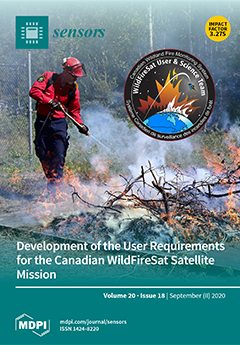Air pollution has been a looming issue of the 21st century that has also significantly impacted the surrounding environment and societal health. Recently, previous studies have conducted extensive research on air pollution and air quality monitoring. Despite this, the fields of air pollution
[...] Read more.
Air pollution has been a looming issue of the 21st century that has also significantly impacted the surrounding environment and societal health. Recently, previous studies have conducted extensive research on air pollution and air quality monitoring. Despite this, the fields of air pollution and air quality monitoring remain plagued with unsolved problems. In this study, the Pollution Weather Prediction System (PWP) is proposed to perform air pollution prediction for outdoor sites for various pollution parameters. In the presented research work, we introduced a PWP system configured with pollution-sensing units, such as SDS021, MQ07-CO, NO2-B43F, and Aeroqual Ozone (O
3). These sensing units were utilized to collect and measure various pollutant levels, such as PM2.5, PM10, CO, NO
2, and O
3, for 90 days at Symbiosis International University, Pune, Maharashtra, India. The data collection was carried out between the duration of December 2019 to February 2020 during the winter. The investigation results validate the success of the presented PWP system. In the conducted experiments, linear regression and artificial neural network (ANN)-based AQI (air quality index) predictions were performed. Furthermore, the presented study also found that the customized linear regression methodology outperformed other machine-learning methods, such as linear, ridge, Lasso, Bayes, Huber, Lars, Lasso-lars, stochastic gradient descent (SGD), and ElasticNet regression methodologies, and the customized ANN regression methodology used in the conducted experiments. The overall AQI values of the air pollutants were calculated based on the summation of the AQI values of all the presented air pollutants. In the end, the web and mobile interfaces were developed to display air pollution prediction values of a variety of air pollutants.
Full article






